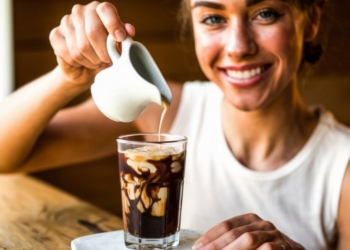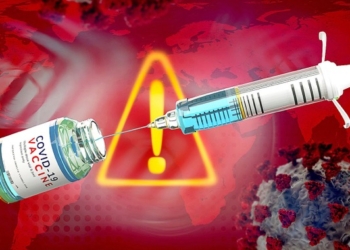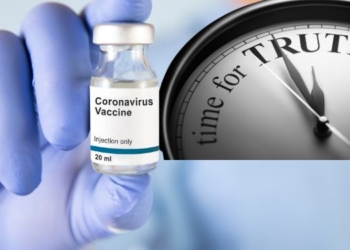
The introduction of artificial sweeteners seemed to sweep through American society like an angel here to answer our prayers. Touted as the “no calorie” alternative to sugar, they became highly recommended by doctors as a healthy substitute in our diets for ourselves and our children. With an increasing number of people becoming obese and developing heart disease or diabetes in our society, artificial sweeteners appeared to be the miracle to decrease the number of these conditions and possibly save lives.
Any questions about how they were made and any side effects on the body were swept under the rug as more doctors, dietitians, and nutritionists recommended them as a dietary change whose benefits far outweighed any possible negatives.
Increasingly over the years, there have been reports and rumors addressing potential consequences to our health due to artificial sweeteners. At the very least, they are proving to be less beneficial than originally thought. As our society is moving to more earth-friendly, natural, and organic foods, more questions have arisen about their safety. Additionally, more time has passed since their use became mainstream. This has allowed scientists to observe and study the effects over time.
Although real sugar and artificial sweeteners are both sweet and can be substituted for each other in a variety of ways, their differences show in what they are made of, how the body reacts to each, and the consequences of those reactions. Researchers reveal six differences between artificial sweeteners and real sugar.
What are artificial sweeteners?
Artificial sweeteners fall under the category of sugar substitutions. According to Segen’s Medical Dictionary, artificial sweeteners are considered to be any group of substances with a taste similar to the usual dietary sugars, glucose, and sucrose that are metabolized incompletely or not at all, resulting in a minimal gain of calories.
Not all sugar substitutions are artificial sweeteners. Honey, corn syrup, stevia leaf (Truvia, Pure Via) or agave are considered natural sugar substitutes. Aspartame (Equal, Nutrasweet), neotame, saccharin, and sucralose (Splenda) are synthetic substances commonly recognized as artificial sweeteners.
Sugar, or sucrose, comes from sugar cane or sugar beets.
How were artificial sweeteners discovered?
Artificial sweeteners have had a rather haphazard method of discovery.
Saccharin
Saccharin was discovered in 1897 by a scientist who had been researching new uses for coal tar derivatives at John Hopkins University. Neglecting to wash his hands prior to lunch, he accidentally tasted something sweet on his hands. After sampling everything in the lab, he narrowed the source down to benzoic sulfimide.
Benzoic sulfimide is a coal tar derivative that turns out to be 300 times sweeter than sugar. It had been banned in 1912 but the ruling was reversed during WWII when sugar rationing made it necessary to find a substitute.
Cyclamate
This artificial sweetener is best known by the old pink packets of Sweet n Low. It was discovered in 1937 as a grad student of the University of Illinois was working on a fever reduction medication. Coincidentally, he also happened to taste something sweet on his fingers.
Cyclamate is approximately 30-50 times sweeter than sugar. It had its greatest boon in the 1950s when Tab and Diet Pepsi were the craze. This is also when Sweet n Low went into production. By 1968, Americans were consuming 17 million pounds of it a year.
Later, it was discovered that cyclamate caused bladder cancer in rats, resulting in the FDA banning it immediately. At that point, Sweet n Low switched to using a saccharin-based product.
Aspartame
Aspartame didn’t make its debut until about a decade after cyclamate. It too was another unexpected, finger-licking discovery. While developing a new ulcer drug in 1965, James Schlatter, a research chemist, licked his fingers and tasted something sweet. He isolated it to be an amino compound of aspartic acid and phenylalanine. It is 200 times sweeter than sugar.
It failed to hit the market until 1981 due to suspicions of it causing brain tumors. Yet in the 1980s it replaced more than a billion pounds of sugar in the American diet.
Sucralose
Splenda, as it’s more commonly known, was another accidental discovery. Scientists were working on a way to molecularly bond sucrose molecules with chlorine. One of the scientists misheard a direction to test the substance. Instead, he tasted it. Luckily, it didn’t cause any harm and that led to the creation of sucralose.
Sucralose is slightly different than the other artificial sweeteners in that it is partially metabolized by the body and, therefore, has a few calories. The other benefit of it is that it can be cooked with.
Neotame
This is the newest sweetener, having hit the market in 2002. It is a derivative of aspartame. Neotame claims to be 7,000 to 13,000 times sweeter than sugar. It is quickly metabolized and fully eliminated by the body through our natural processes. This is the only one of the sweeteners discovered intentionally.
How are artificial sweeteners different than sugar?
Ingredients
This difference is in the contrast of the labeling: artificial sweeteners vs sugar. As described above, artificial sweeteners are synthesized ingredients which created a sweet taste. Sugar is gathered from the natural plants of sugar cane and sugar beet. Additionally, the artificial sweetener is hundreds to thousands of times sweeter in taste.
















